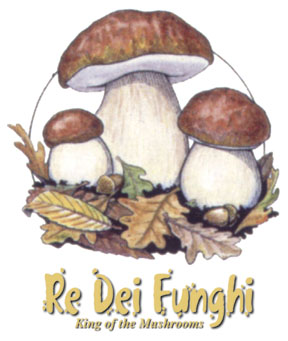India
is the perfect backdrop for chefs looking for an inspirational
playground with the timeless culinary kaleidoscope of historical,
religious and geographical influences. Throughout its history,
India has been invaded by armies, traders and immigrants
from all over the world, all adding culinary spectrum to
India’s cuisine. The diverse geographical regions
also provide a plethora of different cooking customs and
nuances interspersed throughout the country’s many
climates. Also adding to the complexity of India’s
cuisine is the deep-rooted and profound influence religion
has on how and what people eat.

India’s
history underwent many significant invasions including the
Greeks, led by Alexander the Great in 326 BC. Mogul invaders
in the 16th century introduced meat and rice dishes to India.
The regions of India with the longest history of their presence
exhibit a strong Persian influence, using fresh and dried
fruit, cashews, pistachios and almonds in their meat dishes,
as well as many dairy products. Portuguese rulers brought
chilies and the more recent rulers from Britain, in the
18th and 19th centuries, had an influence on chutney development.
These were the major invasions, but there were also smaller
conflicts which impacted the way Indians eat by Bactrian,
Mongol, Scythian, Parthian, Kushan, Hun, Arab, Turk, Afghan,
and the Dutch.
The
cuisine of southern India with its Hindu practice of vegetarianism,
is considered a traditional style which incorporates fresh
cooked vegetables and strong spices with dishes becoming
hotter closer to the equator. Rice is the predominant crop
in the south followed by pulses (the dried seeds of any
of several legumes including beans, peas, and lentils) seafood
and tropical fruits. The food is mostly steamed and they
prefer to start with their spices whole and grind them into
a paste with cooked onions. Cooks in the tropical south
make heavy use of coconut milk, an ingredient rarely seen
in the North. In the jungle regions of India tropical fruits
such as coconuts, guava, papaya, bananas and mangoes grow
plentifully. Close to the Himalayas, in the mountainous
north where the weather is temperate, wheat is the predominant
grain followed by corn and nuts. Lamb and other meat dishes
here can be extravagant. The food is mostly cooked in oil
and they tend to grind their spices to a fine powder. Both
India’s east and west coasts border the waters of
the Arabian Sea, Bay of Bengal and the Indian Ocean offering
plentiful bounties of fish and crustaceans.
The
diversity and pervasive role religion plays in Indian society
has shaped and influenced what and how people eat from region
to region. For centuries, the practice of Hinduism, with
its belief in reincarnation has resulted in very refined
vegetarian cuisine. They rely on legumes; both whole and
split for protein, mixed with grain and a variety of vegetables
flavored with intense spice mixtures to provide a wholesome
diet. The Brahmins and other members of the merchant caste
observe strict vegetarian rules, while people in other castes
eat meat. Hinduism, on the other hand, takes an active role
in deciding what types of animals people can eat. Killing
cows for beef is strictly prohibited because Hindus realized
from ancient times the life-giving role cows played in their
society, producing dairy products, pulling the plows in
the fields as well as providing fertilizer for crops. They
rely on the meats from goat, lamb and chicken. The Muslims
who conquered a large area of India in the 12th century
did not have many dietary restrictions with the exception
of pork and the consumption of alcohol. They brought a vast
array of dishes with them. Most notably; kabobs, kormas,
briyani (rice with meats) and items prepared in the one-thousand
degree tandoori oven which can cook bread, fish and meat
in seconds.
Though
every region of India has its own diverse cooking style,
there are still several threads of similarity that bind
Indian cuisine together, the intense combination of spices
known as Masalas. This is a word used throughout India to
describe a spice blend with a myriad of combinations. It
can refer to a simple combination of two or three spices
or a complex blend of 10 or more ingredients. The principal
spice combination is known as Garam Masala having countless
variations depending on the cook and the dish being seasoned.
Whether they are whole, ground, roasted or stewed, the use
of spices marks a unifying characteristic of an otherwise
highly diverse culture. It is the only place in the world
that incorporates this breadth of flavors into its meals.
Indian
cooking makes use of more dairy products, including milk,
cream, yogurt, buttermilk, sour cream and cheese, than anywhere
else in Asia. Unleavened or flat bread is also a dietary
staple of all the regions of India. The breads are made
from wheat, rice and ground legumes, depending on the part
of the country. During meals, most Indians still prefer
sitting on a straw mat on the kitchen floor, generally eating
with their fingers. The foundation of an Indian meal is
a grain eaten with a pulse, vegetable and a fish, meat or
poultry. The dishes are seasoned with custom spice blends,
clarified butter, chutneys, savory pickles and yogurt based
salads. Also served with meals is unleavened bread and a
sweet milk-based dessert usually completes the meal.
In
the United States, Indian food is gaining popularity as
a cuisine of intense and unique flavors. Chefs across the
country are using the spices and techniques to add complexity
to Western dishes while others are cooking authentic Indian
cuisine in restaurants in most metropolitan areas. These
include; Oona Settembre, Corporate Executive Chef of Dave
and Buster’s in Dallas, Texas, RoxSand Scocos, Executive
Chef/Owner of RoxSand in Phoenix, Arizona and Raghan Iyer,
owner of the Essences of Thyme in Minneapolis, Minnesota.
They have been cooking authentic and fusion Indian dishes
in their own restaurants and have won recognition from the
most prestigious culinary institutions in the country. |











